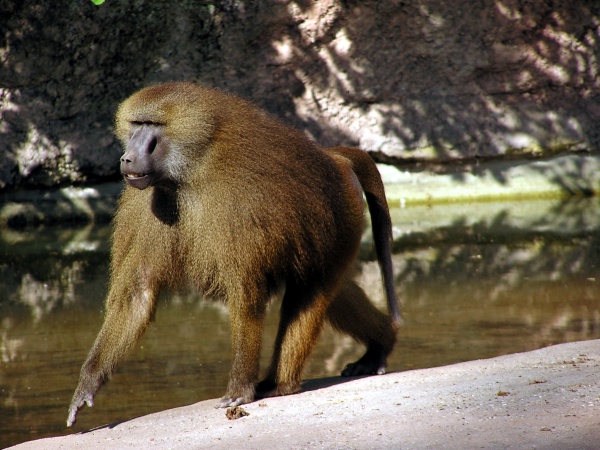Facts About Guinea baboon
The Guinea baboon, also known as the red baboon, is a captivating member of the Old World monkey family. It's one of the smaller baboon species, weighing between 13 to 26 kg, and can live for 20 to 30 years. These baboons inhabit western Africa, particularly in countries such as Guinea, Senegal, Gambia, Mauritania, and Mali, where they thrive in dry forests, gallery forests, and savannas.
Guinea baboons are diurnal, spending most of their time on the ground, although they seek refuge in trees at night to stay safe from predators. They live in large social groups known as troops, which can consist of up to 200 members and follow a strict hierarchy. Their diet is diverse, including fruits, roots, insects, small mammals, and more. Notably, they contribute to the health of their ecosystem by dispersing seeds and digging for water sources.
Communication is vital among Guinea baboons, and they use a blend of vocalizations, physical interactions, and visual signals to convey messages. Unfortunately, they are classified as "near threatened" due to habitat loss and their restricted range. Males and females are easily distinguishable; males have manes while females have pink rumps.
These social animals typically form groups with a dominant male, several females, and their young. Despite their primarily terrestrial lifestyle, they ascend to the trees to sleep. When foraging, females often stay near males for protection. Reproduction is marked by noticeable swelling in females when they are ready to mate, and after a gestation period of approximately six months, mothers nurse their infants for six to eight months.
Despite their adaptability, Guinea baboons face significant threats from habitat destruction and human activities. This makes conservation efforts essential to ensure their survival and protect their populations for the future.

 Senegal
Senegal